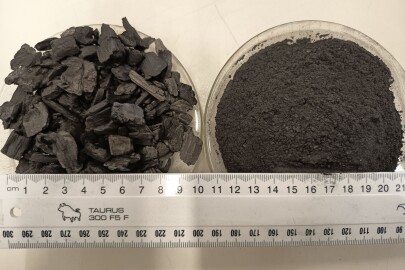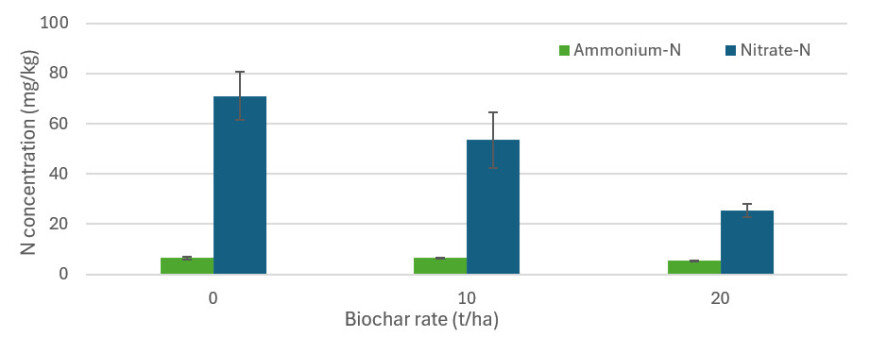Biochar incorporation into soils: initial effects and challenges
 To investigate the early effects of biochar incorporation into soils, scientists from the Bioeconomy Science Institute’s AgResearch Group, funded by the Ag Emissions Centre, established a large plot experiment at Aramiro Station in Waikato. Soil was cultivated in April 2025 using a disc plough, and biochar was applied by a dual-chain fertiliser-spreading truck (10 May 2025) and subsequently incorporated into the soil using a rotovator (16 May 2025). Italian ryegrass (Lolium multiflorum) seed was broadcast and the entire paddock rolled at seeding.
To investigate the early effects of biochar incorporation into soils, scientists from the Bioeconomy Science Institute’s AgResearch Group, funded by the Ag Emissions Centre, established a large plot experiment at Aramiro Station in Waikato. Soil was cultivated in April 2025 using a disc plough, and biochar was applied by a dual-chain fertiliser-spreading truck (10 May 2025) and subsequently incorporated into the soil using a rotovator (16 May 2025). Italian ryegrass (Lolium multiflorum) seed was broadcast and the entire paddock rolled at seeding.
Two target rates of biochar were tested (10 and 20 t/ha, n = 3). In addition, a control treatment with no biochar application was included. Biochar was generated from pine forestry waste (500–600°C, 80% dry matter, 90% C, 0.2% nitrogen [N], particle size <3,500 µm). Soil cores were sampled (0–75, 75–150, 150–300 mm depth) 10 days after biochar incorporation. Samples were sieved (4 mm) and analysed for pH, total N, and C, and potassium-sulphate-extractable organic C and N. In addition, extracts were analysed for inorganic N (nitrate-N and ammonium-N).
The results showed that high rates of biochar increased soil organic C from 15% (control) to 19% (20 t/ha). Total C increased from 16% (control) to 20% (20 t/ha), resulting in an increase in soil C:N ratio from 13 (control) to 16 (20 t/ha), probably associated with the direct contribution of C from biochar. The increases in total and organic C following the application of biochar align with the reported contribution of biochar application to soil C sequestration.
Biochar also reduced nitrate-N concentrations in the topsoil by 25% and 73% in the 10 and 20 t/ha biochar rate treatments, respectively (see figure). There were only minor effects of biochar application on nitrate-N and extractable organic N in the deeper soil layers. The reduction of nitrate-N concentration observed in the topsoil could result in a reduction of nitrous oxide (N2O) emissions from soils. Nevertheless, the implications of limited N supply for plant growth should also be considered when incorporating biochar to soils. Ammonium-N concentration was not significantly affected by biochar application but decreased naturally with soil depth, from 5.6 to 3.8 and 2.7 mg N/kg at 0–75, 75–150, and 150–300 mm soil depths, respectively.
Soil pH (0–75 mm) increased from 5.5 to 6.0 in the topsoil immediately after the application of 20 t/ha of biochar. This observed increase in pH would be the equivalent of adding 3.5 t/ha of lime, representing a potential co-benefit of high rates of biochar incorporation into the soil.
A long-term evaluation of biochar incorporation into the soil is required to fully understand the impacts of this practice on C sequestration and any additional co-benefits. A life-cycle assessment approach could contribute to a better understanding of the overall cost–benefit of biochar incorporation in New Zealand farming systems, including biochar generation, transport, application, pasture and animal production, and environmental benefits.

Effect of biochar application to topsoil (0–75 mm) on available N concentrations (ammonium and nitrate) (mg/kg). Ammonium: Not Significant; nitrate: P < 0.05; n = 3.
